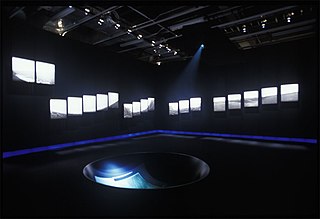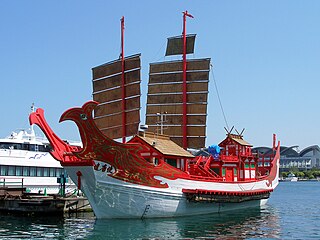This article relies largely or entirely on a single source .(April 2023) |
The List of Japanese ambassadors to Brazil started when Chinda Sutemi presented his credentials to the Brazilian government in 1897.
This article relies largely or entirely on a single source .(April 2023) |
The List of Japanese ambassadors to Brazil started when Chinda Sutemi presented his credentials to the Brazilian government in 1897.
This is a chronological list of Japanese diplomats. [1] [2]
| Inaugural date | Official position (Japanese) | Official position | Name (Japanese) | Name |
|---|---|---|---|---|
| 23.8.1897 | 弁理務使 | Minister resident | 珍田 捨巳 | Chinda Sutemi |
| 12.10.1898 | 臨時代理公使 | Chargé d'affaires ad interim | 三浦 弥五郎 | Miura Yagorō |
| 4.7.1899 | 弁理公使 | Minister resident | 大越 成徳 | Okoshi Narinori |
| 27.5.1903 | 臨時代理公使 | Chargé d'affaires ad interim | 堀口 九萬一 | Horiguchi Kumaichi |
| 19.4.1905 | 弁理公使 | Minister resident | 杉村 濬 | Sugimura Fukashi |
| 21.5.1906 | 臨時代理公使 | Chargé d'affaires ad interim | 三浦 荒次郎 | Miura Arajirō |
| 15.3.1907 | 弁理公使 | Minister resident | 内田 定槌 | Uchida Sadatsuchi |
| 9.10.1907 | 特命全権公使 | Minister Plenipotentiary | 内田 定槌 | Uchida Sadatsuchi |
| 16.6.1910 | 臨時代理公使 | Chargé d'affaires ad interim | 野田 良治 | Noda Ryōji |
| 8.1.1911 | 臨時代理公使 | Chargé d'affaires ad interim | 藤田 敏郎 | Fujita Toshirō |
| 14.7.1913 | 臨時代理公使 | Chargé d'affaires ad interim | 野田 良治 | Noda Ryōji |
| 18.8.1913 | 特命全権公使 | Minister Plenipotentiary | 畑 良太郎 | Hata RyōTarō |
| 25.3.1917 | 臨時代理公使 | Chargé d'affaires ad interim | 野田 良治 | Noda Ryōji |
| 30.10.1918 | 特命全権公使 | Minister Plenipotentiary | 堀口 九萬一 | Horiguchi Kumaichi |
| 1.5.1923 | 臨時代理大使 | Chargé d'affaires ad interim | 堀口 九萬一 | Horiguchi Kumaichi |
| 16.8.1923 | 特命全権大使 | Ambassador | 田付 七太 | Tatsuke Shichita |
| 31.8.1926 | 臨時代理大使 | Chargé d'affaires ad interim | 赤松 祐之 | Akamatsu Sukeyuki |
| 25.1.1927 | 特命全権大使 | Ambassador | 有吉 明 | Ariyoshi Akira |
| 16.4.1930 | 臨時代理大使 | Chargé d'affaires ad interim | 縫田 栄四郎 | Nuita Eishirō |
| 15.12.1931 | 臨時代理大使 | Chargé d'affaires ad interim | 黒沢 二郎 | Kurosawa Jirō |
| 14.8.1932 | 特命全権大使 | Ambassador | 林 久治郎 | Hayashi Kyūjirō |
| 13.9.1934 | 臨時代理大使 | Chargé d'affaires ad interim | 内山 岩太郎 | Uchiyama Iwatarō |
| 18.1.1935 | 特命全権大使 | Ambassador | 沢田 節蔵 | Sawada Setsuzō |
| 10.11.1938 | 臨時代理大使 | Chargé d'affaires ad interim | 天城 篤治 | Amagi Tokuji |
| 10.1.1939 | 特命全権大使 | Ambassador | 桑島 主計 | Kuwashima Kazue |
| 20.9.1940 | 臨時代理大使 | Chargé d'affaires ad interim | 工藤 忠夫 | Kudo Tadao |
| 13.11.1940 | 特命全権大使 | Ambassador | 石射 猪太郎 | Ishii Itarō |
| 3.7.1942- | Second World War | |||
| 28.4.1952 | 臨時代理大使 | Chargé d'affaires ad interim | 原 馨 | Hara Kaoru |
| 29.9.1952 | 特命全権大使 | Ambassador | 君塚 慎 | Kimizuka Nobuo |
| 19.2.1955 | 臨時代理大使 | Chargé d'affaires ad interim | 吉田 賢吉 | Yoshida Kenkichi |
| 30.3.1955 | 特命全権大使 | Ambassador | 安東 義良 | Andō Yoshirō |
| 1.6.1961 | 臨時代理大使 | Chargé d'affaires ad interim | 藤田 久治郎 | Fujita Kyūjirō |
| 24.7.1961 | 特命全権大使 | Ambassador | 田付 景一 | Tatsuke Keiichi |
| 6.7.1967 | 臨時代理大使 | Chargé d'affaires ad interim | 西宮 信安 | Nishimiya Nobuyasu |
| 20.9.1967 | 特命全権大使 | Ambassador | 千葉 皓 | Chiba Kō |
| 27.11.1970 | 臨時代理大使 | Chargé d'affaires ad interim | 荒木 外喜三 | Araki Tokizō |
| 13.1.1971 | 特命全権大使 | Ambassador | 中村 茂 | Nakamura Shigeru |
| 18.7.1973 | 臨時代理大使 | Chargé d'affaires ad interim | 浅羽 満夫 | Asaba Mitsuo |
| 6.8.1973 | 特命全権大使 | Ambassador | 宇山 厚 | Uyama Atsushi |
| 4.11.1975 | 臨時代理大使 | Chargé d'affaires ad interim | 浅羽 満夫 | Asaba Mitsuo |
| 9.2.1976 | 特命全権大使 | Ambassador | 吉田 健三 | Yoshida Kenzō |
| 3.5.1979 | 臨時代理大使 | Chargé d'affaires ad interim | 塚田 千裕 | Tsukada Chihiro |
| 17.7.1979 | 特命全権大使 | Ambassador | 大口 信夫 | Oguchi Nobuo |
| 18.12.1982 | 臨時代理大使 | Chargé d'affaires ad interim | 松村 慶次郎 | Matsumura Keijirō |
| 5.1.1983 | 特命全権大使 | Ambassador | 伊達 邦美 | Tate Kuniyoshi |
| 9.4.1986 | 臨時代理大使 | Chargé d'affaires ad interim | 賀来 弓月 | Kaku Yuzuki |
| 9.5.1986 | 特命全権大使 | Ambassador | 小村 康一 | Komura Kouichi |
| 18.2.1989 | 臨時代理大使 | Chargé d'affaires ad interim | 佐々木 伸太郎 | Sasaki Shintarō |
| 2.3.1989 | 特命全権大使 | Ambassador | 賀陽 治憲 | Kaya Harunori |

Fujiwara no Yoshifusa, also known as Somedono no Daijin or Shirakawa-dono, was a Japanese statesman, courtier and politician during the Heian period.

Champon, also known as Chanpon, is a noodle dish that is a regional cuisine of Nagasaki, Japan. There are different versions in Japan, Korea and China. The dish was inspired by Chinese cuisine.
The Shoku Nihongi (続日本紀) is an imperially-commissioned Japanese history text. Completed in 797, it is the second of the Six National Histories, coming directly after the Nihon Shoki and followed by Nihon Kōki. Fujiwara no Tsugutada and Sugano no Mamichi served as the primary editors. It is one of the most important primary historical sources for information about Japan's Nara period.
The Dai Kan-Wa Jiten is a Japanese dictionary of kanji compiled by Tetsuji Morohashi. Remarkable for its comprehensiveness and size, Morohashi's dictionary contains over 50,000 character entries and 530,000 compound words. Haruo Shirane (2003:15) said: "This is the definitive dictionary of the Chinese characters and one of the great dictionaries of the world."
Nihon Kingendaishi Jiten is a dictionary of contemporary Japanese history published in 1978, as the revision of Nihon Kindaishi Jiten of 1958. Both editions were published by Tôyô Keizai Shinpôsha (東洋経済新報社) and were edited by a committee organized by the Faculty of Letters at Kyoto University. The new edition: Nihon Kingendaishi Jiten has an extensive coverage of Japanese history from 1848 to 1975, with a particular focus on contemporary Japanese history.

Japanese words of Dutch origin started to develop when the Dutch East India Company initiated trading in Japan from the factory of Hirado in 1609. In 1640, the Dutch were transferred to Dejima, and from then on until 1854 remained the only Westerners allowed access to Japan, during Japan's sakoku seclusion period.
Sadayoshi Fukuda was a Japanese social philosopher and critic.

Taku Aramasa is a Japanese photographer.
Kiyoshi Nishiyama was a versatile Japanese amateur photographer who specialized in landscapes.
Kogo Shūi (古語拾遺) is a historical record of the Inbe clan of Japan written in the early Heian period (794–1185). It was composed by Inbe no Hironari (斎部広成) in 807 using material transmitted orally over several generations of the Inbe clan.
The Nihon Ryōiki (日本霊異記) is an early Heian period setsuwa collection. Written by Kyōkai between 787 and 824, it is Japan's oldest collection of Buddhist setsuwa. It is three volumes in length.
Nihon Kōki (日本後紀) is an officially commissioned Japanese history text. Completed in 840, it is the third volume in the Six National Histories. It covers the years 792–833.
Shoku Nihon Kōki (続日本後紀) is an officially commissioned Japanese history text. Completed in 869, it is the fourth volume in the Six National Histories. It covers the years 833–850.
Shinsen Shōjiroku is an imperially commissioned Japanese genealogical record. Thirty volumes in length, it was compiled under the order of Emperor Saga by his brother, the Imperial Prince Manta. Also by Fujiwara no Otsugu and Fujiwara no Sonohito et al. It was initially completed in 814, but underwent a revision to be recompleted in 815.
Ruijū Kokushi (類聚国史) is a historical text that categorizes and chronologizes the events listed in the Six National Histories. It was compiled by Sugawara no Michizane and completed in 892. The text was commissioned by Emperor Uda.
Nihon Montoku Tennō Jitsuroku, abbreviated as Montoku Jitsuroku, is an officially commissioned Japanese history text. Completed in 879, it is the fifth text in the Six National Histories series. It covers the years 850-858, the years of reign of the 55th Japanese sovereign, Emperor Montoku (827-858).

Japanese missions to Tang China represent Japanese efforts to learn from the Chinese culture and civilization in the 7th, 8th and 9th centuries. The nature of these contacts evolved gradually from political and ceremonial acknowledgment to cultural exchanges; and the process accompanied the growing commercial ties which developed over time.

Heibonsha (平凡社) is a Japanese publishing company based in Tokyo, which publishes encyclopedias, dictionaries and books in the fields of science and philosophy. Since 1945 it has also published books on art and literature. Similarly to the Iwanami Shoten and the Chikuma Shobō publishing houses, its publishing program is directed primarily at an academic audience and features well-illustrated publications.